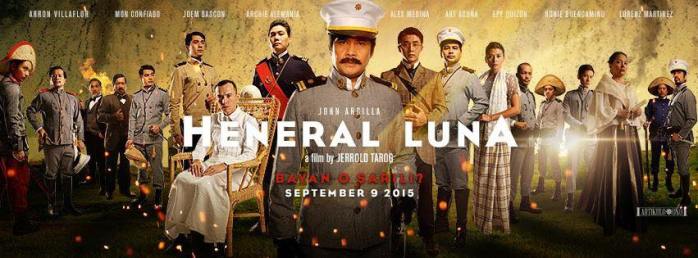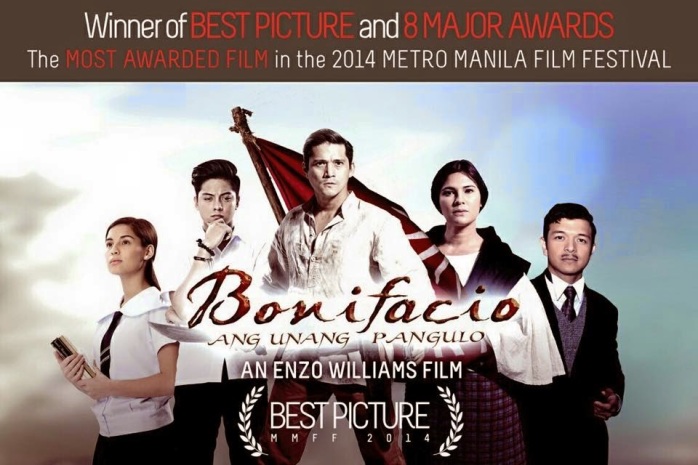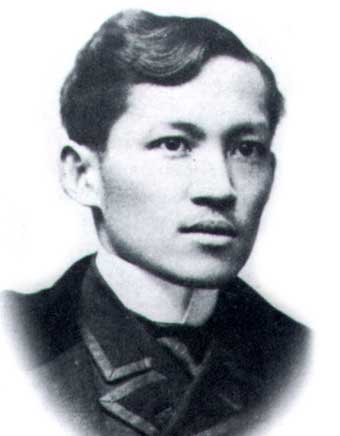I absolutely don’t like history classes. They’re so boring. Especially as a kid, my mom had to drag me through studying the history of the Philippines. Our ancestors? I don’t feel connected to them at all. The questions were always the same things on exams. What is the name of our 10th President? How long did the Martial Law last? What date did Magellan come to the Philippines?
Gahd. Why should I care about this stuff? It’s all about people who ruled and changed history yada yada yada but honestly I didn’t see the point of memorizing dates, whole names, or even the names of the laws enacted, wars that happened, or betrayals that occurred within the government.
I’m looking at you, Emilio Aguinaldo. Yeah, we all know you had Andres Bonifacio shot. Modern time Brutus.
Even in college, I avoided all the Kasaysayan (History) electives. My aversion to history was so bad.
That was until, I was introduced to Heneral Luna.

His name means moon but he is my sun (haha get it get it? no please don’t leave no more jokes I swear)
Heneral Luna was a biopic film released in 2015 by Jerrold Tarog. Here’s an interesting tidbit: the movie flunked at first. It was screening in 70 theatres (???) nationwide but within a week they stopped showing it in at least half. No one was watching it. I mean, who the hell would pay P200 for a biopic? That’s the equivalent of two Jollibee meals.
But then, the people who actually did give it a chance were raving about it so freakin hard. They posted on Facebook, Twitter, Instagram, and Snapchat. They encouraged people to watch it. Facebook was flooded with friends talking about how amazing the movie turned out to be. The last biopic released was a flop.

Surprisingly, even with stars like Padilla and Padilla
So, of course, as people are wont to do, they watched the movie. Encouraged by friends on Facebook (so it’s seen as an authentic review rather than advertising from a company making money off of it), more and more people trickled in the theatre, and more and more people watched it.
In a world of social media, Heneral Luna managed to advertise itself through word of mouth.
So from 30 or so theatres, the number jumped to a 100 theatres. The movie managed to stay in cinemas for several weeks. It was shown in New York, Los Angeles, and Hong Kong. Filipinos all over the world flocked to watch this movie.
What’s the difference between Heneral Luna and Bonifacio? This movie humanized the people from history.
Think about it, can you really ever imagine Barack Obama, going through college? Awake at three in the morning, cold coffee on the table. It’s dark and quiet in the library. He hasn’t showered for three days, the paper is due in a few hours. His penmanship is getting more and more unreadable as the night goes on.
You see, I think that’s why I hated history back then, when I was a kid. We were told all these stories of how Lapu-lapu managed to get rid of the mean Magellan who attempted to “civilize” our ancestors. He was seen as the great and the powerful. But so what?
I don’t know how that struggle feels like. What does it feel like to have other people depend on you for leadership? What does it like to fight to the death with people you disagree with? No, I’m not trying to undermine any of what history says, but it’s just ultimately uninteresting to me (and I’m sure to a lot of other people).
Heneral Luna changed all that. Usually, biopics had very stiff language. So formal. So intense. So tragically distant. But check out this trailer of Heneral Luna.
The Tagalog used is modern and easy to understand. And it’s so friggin quotable. The movie takes it up a notch too. Heneral Luna swears, he’s always pissed. There’s a scene in the movie where the military gained a train for transporting goods to their base. Everyone brought along their family to ride the train and check it out. Luna drives them out, screaming
“Puñeta! Hindi tayo mamamasyal! (Son of a bitch! We aren’t going on a trip!)”
-Heneral Luna, as he used his baton to chase the Filipinos and the chickens away
The movie isn’t all serious. There are scenes that will make you laugh, scenes that will make you tense. You get to know Luna as a person. Throughout the movie, you’ll see him tired, frustrated, happy, angry, making jokes, and honestly working very hard for a country that doesn’t seem to love him back.
Then the movie ends with the actual brutal truth: Heneral Luna was brutally murdered under the alleged orders of Emilio Aguinaldo. The entire scene takes fifteen minutes. It’s brutal to watch. It’s not even the most agonizing part of the film.
Everyone who was in on the plan for his death looked straight in the camera and talked to the audience. They vehemently denied their involvement in Luna’s death. Emilio Aguinaldo argued that Luna was his best commander. Buencamino stated that he hated the guy but definitely not enough to kill him. And they believed this with thorough conviction.
You walk out of the film dazed and angry. It feels like you just lost a friend.
I watched that film four times. I have a picture with one of the actors. It’s just… wow.
This is something I realized two years after the film was released, though. All of this writing is from memory. I didn’t have to look up their names on a history book or Wikipedia. I just honestly loved it and it’s basically history.
The same for Hamilton, the amazing musical on Broadway about Alexander Hamilton. I know so much shit about these people.
Here’s a key takeaway schools should learn from biopics like Heneral Luna or musicals like Alexander Hamilton. History shouldn’t just be about memorizing dates, names, or places of wars, peace treaties, or freedoms claimed. It should literally be about the story of the people before us.
Make history interesting by making the people interesting. Philippine history books just always talk about it like a list of facts to memorize. Make students understand. Make it a story.
Because honestly something we were never taught in history is the fact that these were normal people before history wrote them down as important. Heneral Luna was a doctor, Andres Bonifacio was a middle class citizen who cared for his family. Jose Rizal was a womanizing short dude who had an insane schedule of studying a lot. So basically he was a nerd.

National hero. Nerd. Original fuccboi.
You gotta translate it for the students. What made them fight for the Philippines? Why did they decide to risk their lives for everything? You can’t just say shit like “oooh, they loved their country so much…” because Filipinos nowadays are just looking for ways to leave the Philippines because the opportunities here are so shit.
Make the students write plays, tell stories. Little tidbits of trivia clickbait will make students more interested.
Did you know World War II started because an assassin ate a sandwich?
Did you know that Heneral Luna was actually a momma’s boy?
Did you know that the Berlin Wall was torn down because of miscommunication?
History looks at things in retrospect. Things weren’t seen as so grand before or during the event. In retrospect, history identified these key events and pinpointed them to the escalation of tension, to the eventual climax of changing a significant perspective of a nation or a group of people.
The only difference between us and the people in our history lessons? They took action and fought for what they believed in. Make us understand, education systems.
Make us love our country once more.